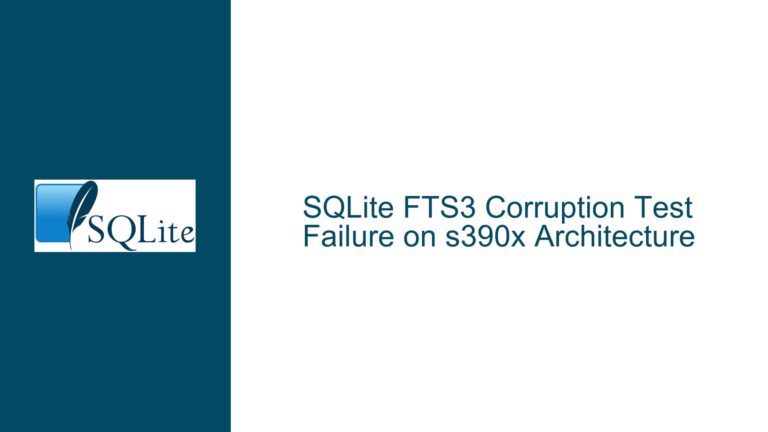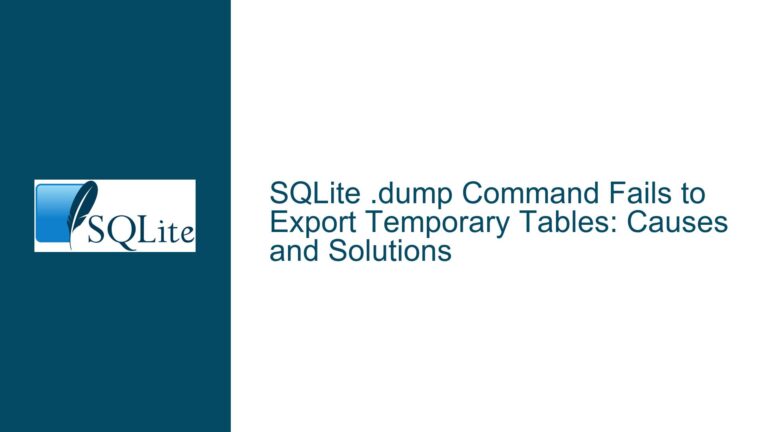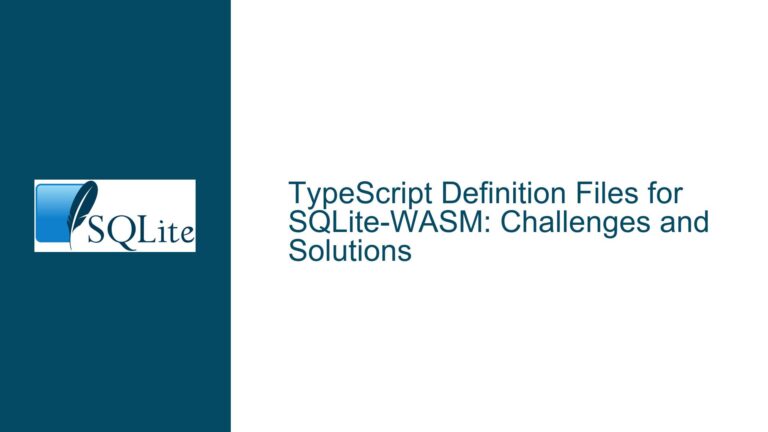Replacing CR/LF with LF in SQLite Triggers Without Recursion
Replacing CR/LF with LF in SQLite Notes Field
The core issue revolves around creating SQLite triggers to replace carriage return and line feed (CR/LF) characters with just line feed (LF) characters in a notes field within a table. The user initially attempted to implement this using BEFORE INSERT and BEFORE UPDATE triggers but encountered issues with the syntax and functionality. The primary challenges include:
Trigger Type Selection: The user initially used
BEFOREtriggers, which are not suitable for this use case because they cannot modify thenew.notesfield directly. TheBEFOREtrigger is designed to validate or modify data before it is written to the database, but it cannot update the row being inserted or updated.Recursive Trigger Issue: When using
AFTER UPDATEtriggers, the user encountered a recursion problem. The trigger would fire repeatedly because theUPDATEstatement within the trigger caused the trigger to fire again, leading to an infinite loop.Syntax Misunderstanding: The user attempted to use
SELECT new.notes = replace(new.notes, char(13)||char(10), char(10)), which is not valid SQLite syntax. SQLite does not support direct assignment within aSELECTstatement.Constraint Timing: The user raised concerns about the timing of
CHECKconstraints relative toAFTERtriggers. Specifically, they wondered if anAFTERtrigger would complete its modifications before theCHECKconstraint is evaluated.Global Recursive Trigger Setting: The user explored using
PRAGMA recursive_triggersto control recursion but found that it cannot be set within a trigger, only at the global level.
Recursive Trigger Behavior and Constraint Timing
The recursion issue arises because the AFTER UPDATE trigger modifies the same row that triggered it, causing the trigger to fire again. This creates an infinite loop unless the recursion is controlled. Additionally, the timing of CHECK constraints relative to triggers is critical. CHECK constraints are evaluated after the trigger completes its execution, meaning that any modifications made by an AFTER trigger will be subject to the CHECK constraint.
Recursive Trigger Behavior
When an AFTER UPDATE trigger modifies the same row that triggered it, the trigger fires again. This behavior is controlled by the PRAGMA recursive_triggers setting. If recursive_triggers is enabled (the default), the trigger will fire recursively, leading to an infinite loop. If recursive_triggers is disabled, the trigger will not fire again, preventing recursion.
Constraint Timing
CHECK constraints are evaluated after the trigger completes its execution. This means that any modifications made by an AFTER trigger will be subject to the CHECK constraint. For example, if a trigger normalizes a phone number to ensure it meets a CHECK constraint requiring a specific length, the CHECK constraint will evaluate the normalized value, not the original value.
Implementing Non-Recursive Triggers with OF and WHEN Clauses
To address the recursion issue, the OF and WHEN clauses can be used to limit when the trigger fires. The OF clause specifies which columns the trigger should monitor, and the WHEN clause adds a condition that must be met for the trigger to fire. By using these clauses, the trigger will only fire when specific columns are updated and when certain conditions are met, preventing unnecessary recursion.
Example Trigger with OF and WHEN Clauses
CREATE TRIGGER tgr_update AFTER UPDATE OF notes ON t
WHEN new.notes IS NOT old.notes
BEGIN
UPDATE t SET notes = replace(new.notes, char(13)||char(10), char(10))
WHERE ROWID = new.ROWID;
END;
In this example, the trigger only fires when the notes column is updated and when the new value of notes is different from the old value. This prevents the trigger from firing recursively because the UPDATE statement within the trigger does not change the notes column in a way that would cause the trigger to fire again.
Handling INSERT and UPDATE Triggers Separately
While it is not possible to create a single trigger that handles both INSERT and UPDATE events, separate triggers can be created for each event. The AFTER INSERT trigger can be used to normalize the notes field when a new row is inserted, and the AFTER UPDATE trigger can be used to normalize the notes field when an existing row is updated.
Example INSERT Trigger
CREATE TRIGGER tgr_insert AFTER INSERT ON t
BEGIN
UPDATE t SET notes = replace(new.notes, char(13)||char(10), char(10))
WHERE ROWID = new.ROWID;
END;
Example UPDATE Trigger
CREATE TRIGGER tgr_update AFTER UPDATE OF notes ON t
WHEN new.notes IS NOT old.notes
BEGIN
UPDATE t SET notes = replace(new.notes, char(13)||char(10), char(10))
WHERE ROWID = new.ROWID;
END;
Handling CHECK Constraints
If the notes field is subject to a CHECK constraint, the AFTER trigger will ensure that the normalized value is checked against the constraint. For example, if the notes field must be at least 10 characters long, the AFTER trigger will normalize the value, and the CHECK constraint will evaluate the normalized value.
Example Table with CHECK Constraint
CREATE TABLE t (
notes TEXT CHECK(length(notes) >= 10)
);
In this example, the CHECK constraint ensures that the notes field is at least 10 characters long. The AFTER trigger will normalize the notes field, and the CHECK constraint will evaluate the normalized value.
Summary of Solutions
Use
AFTERTriggers:AFTERtriggers are more suitable for this use case because they allow modifications to the row after it has been inserted or updated.Prevent Recursion with
OFandWHENClauses: Use theOFandWHENclauses to limit when the trigger fires, preventing unnecessary recursion.Separate Triggers for
INSERTandUPDATE: Create separate triggers forINSERTandUPDATEevents to handle each case appropriately.Ensure CHECK Constraints Evaluate Normalized Values: Use
AFTERtriggers to ensure that any modifications are subject toCHECKconstraints.
By following these steps, you can successfully replace CR/LF with LF in the notes field without encountering recursion issues or violating CHECK constraints.






